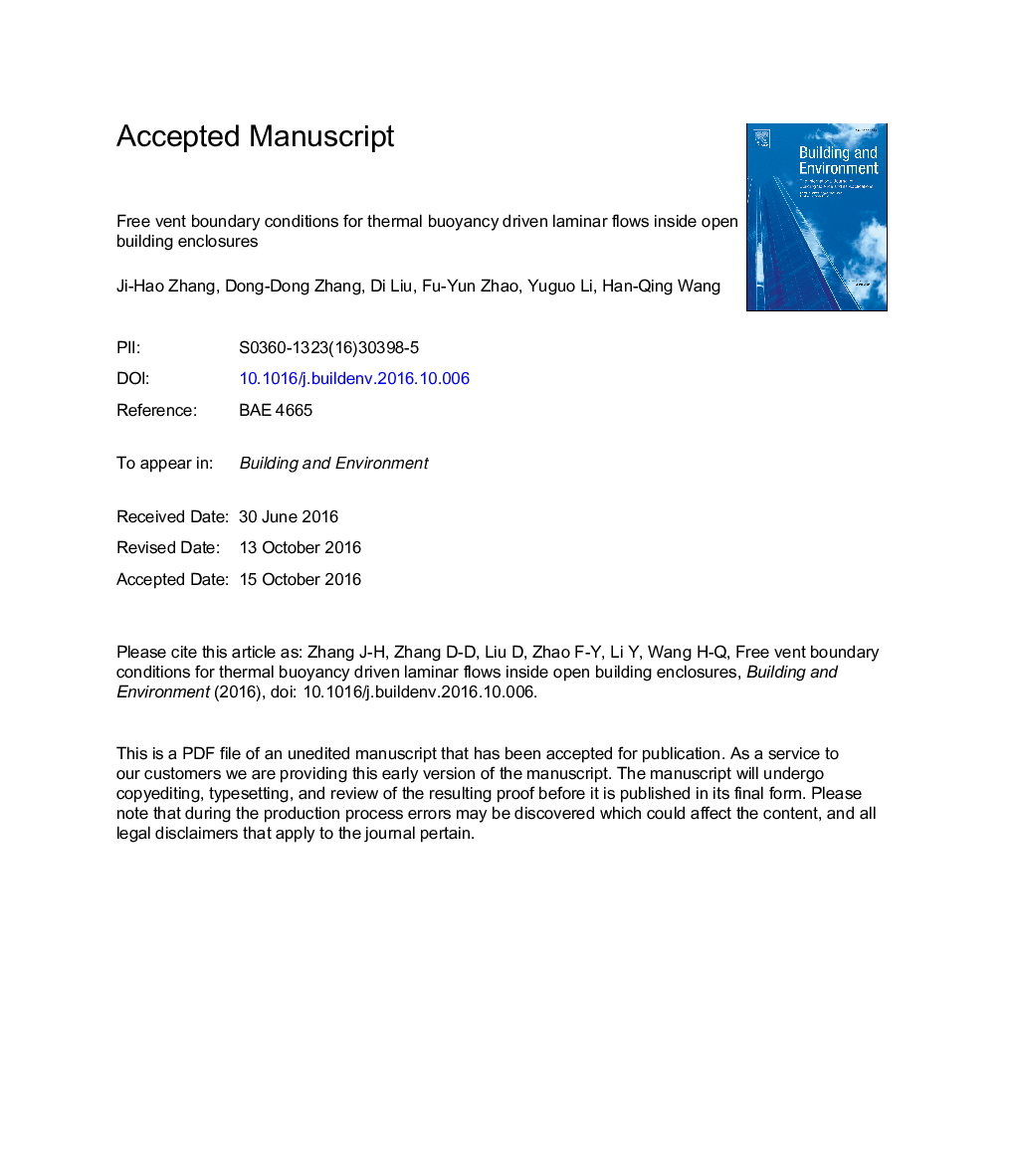| Article ID | Journal | Published Year | Pages | File Type |
|---|---|---|---|---|
| 4917503 | Building and Environment | 2017 | 52 Pages |
Abstract
A comprehensive investigation and review about the free vent boundary conditions are conducted regarding of natural convections inside an open cavity with one side horizontal opening, aiming to abandon the extended computational domain through imposing suitable pressure and momentum boundary conditions on the free ventilated ports. The main differences among Type A, Type C and Type D BCs are the definitions and assumptions on the free port boundary pressures. The physical governing equations for the present investigation are solved numerically for a wide range of thermal Rayleigh number and enclosure aspect ratio to identify the applicability of the four categories of free port boundary conditions. The simulation results show that, with the flow intensity increasing in the region near free opening, Type D BCs, Type C BCs and Type A BCs would take turns being the most effective and suitable BCs to achieve the flow solutions approaching to the reference ones. Regarding of the computational stability, authors-proposed free vent port boundary conditions (Type D BCs) achieve the best performance. In addition, it is found that enclosure ventilation rate is a more suitable and convincing criterion than heat transfer rate to validate the accuracy of the numerical methods.
Keywords
Related Topics
Physical Sciences and Engineering
Energy
Renewable Energy, Sustainability and the Environment
Authors
Ji-Hao Zhang, Dong-Dong Zhang, Di Liu, Fu-Yun Zhao, Yuguo Li, Han-Qing Wang,
